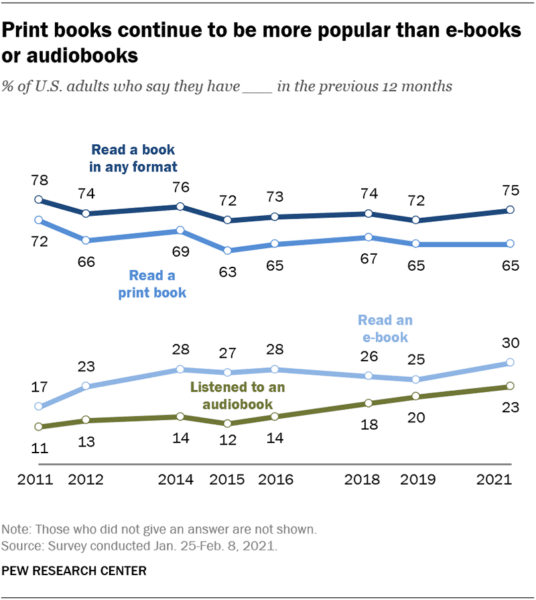
SEO is a complex topic. Not only are SEO fundamentals complex, but we live in a world where search engines are constantly evolving. That is why in order to get a proper SEO education, you need layers of training throughout the year.
Some educational theories say that every person has a preferred learning style. For example, the VARK model highlights four common types of learning styles:
Visual: You prefer graphic elements over words.
Auditory: You prefer lectures and discussions.
Read/write: You prefer written information.
Kinesthetic: You learn through doing.
People aren’t limited to just one learning style, however. Other factors can influence how you like to consume content. One of them is your current circumstances, as this article points out:
”You’re a sales rep and you are driving to a meeting with a client. This morning, you saw that some features of a top-selling product were just updated. Would you rather listen to a brief podcast that reviews the changes; read a sales brochure; or watch an animated video that allows you to answer questions and match features to products? If you’re in your car and just need a quick update, the podcast is the most appropriate choice. Does that make you an auditory learner?”
Given the massive amounts of content created and consumed every minute, what’s the best way to get and retain an SEO education?
Information stands no chance of becoming knowledge unless it sticks.
So which format is best for your SEO learning?
If you are on a quest to up your SEO game, you need access to learning tools that suit your preferred learning style and circumstances. Here are five SEO learning formats, their pros and cons, and recommendations:
- Online training
- Classroom training
- Books
- Supplemental learning
- Membership websites
1. Online training
There are a variety of online training formats. E-learning options for SEO run the gamut from videos and webinars to full online courses with supplemental materials.
Pros: Most legitimate online training courses are self-paced so you can learn in your own time. Online courses typically cost less than in-person training or consulting, and many offer payment options.
Cons: Completion rates for online courses rarely rise above 15 percent. Video training doesn’t come with the same accountability or engagement that an in-person class does. Also, video training can fail if you don’t have access to the experts to ask questions and clarify the material.
Recommendations: Enroll in online training courses throughout the year that have an interactive component for best results (more on that later). Find the courses that will help you solve the specific issues you are facing. Visual learners will enjoy this format most, but so will busy professionals.
2. Classroom
In-person SEO training is less likely to happen since the pandemic. If and when it’s available, it typically mimics a classroom environment — lectures, discussions and even hands-on practice. This type of training happens either at the trainer’s location, on-site at a company or at conference workshops.
Pros: Classroom SEO training can offer university-level content in a setting that allows for clarification of the materials through live discussion. As a real-time format, the curriculum can be tweaked to discuss current trends in SEO. Oftentimes, you get customized advice that is specific to your biggest SEO problems right on the spot. Plus, classroom training is the best way to sync SEO knowledge across teams if multiple members attend together.
Cons: Research shows that passively listening to lectures is not a good way to learn. To succeed with face-to-face learning, you need to be an active listener, ask questions and participate in the work. The cost of travel and missing work is also a concern for some, but many find it to be worth the investment in the long run.
Recommendations: Classroom training appeals most to auditory and kinesthetic learners. But anyone can greatly benefit from in-person SEO training to get a comprehensive understanding of the subject. I taught in-person SEO training classes for many years (pre-pandemic), and many attendees would return once per year to get a core refresh.
3. Books
With the availability of digital content today, you might expect that print books are becoming less desirable. Not so. In fact, data coming from Pew Research Center shows that print books still prevail over audiobooks and e-books.

Side note: This is why I’ve continued to update our “Search Engine Optimization All in One for Dummies” book with Wiley (now in its fourth edition). It’s a big effort at almost 800 pages, but worth it for those who learn best on paper.
Pros: Books can offer thorough, cover-to-cover insights into a topic like SEO. Also, research shows that people can comprehend information better in print versus on-screen. A good book is something you can keep on your shelf and refer to again and again.
Cons: Some books (like mine) are not something you’d likely take on a subway ride for a casual read. However, reading them at home or at work can be an issue, too. The average American only reads 16 minutes per day. Also, buying books and never reading them is a real problem. Finally, print books are not as easily updated as digital content, so they can get out of date quickly.
Recommendations: Print books still appeal to people in the read/write category of learning. If you are dedicated to reading, you can get a lot out of a book on SEO.
4. Supplemental learning
Two popular forms of marketing content today can help enhance your SEO learning: e-books and white papers.
E-books
The e-book I’m referring to here is the type that brands use in their marketing funnels, not an e-book you purchase on Amazon, for example. These are designed to give a general overview of a topic in a short amount of time. E-books are often lighter in text and heavier on visuals and white space.
Pros: E-books are good as an introduction to a topic. Their portable format allows for learning on any device, on the go, without the bulk of a traditional book. Interactive elements, such as links to more resources like articles and videos, allow you to explore more about the topic at your leisure.
Cons: Just like print books, e-books fall prey to being acquired but never read. Also keep in mind that most e-books are a marketing tool, so the information within them could be biased in some way.
Recommendations: E-books largely appeal to the read/write learning style or to someone who is on the go. Read an e-book on SEO to get a high-level overview of a topic, or use it as light reading when you’re standing in line.
White papers / technical content
White papers offer a well-researched, in-depth analysis of a topic delivered in a digital format. This type of content is often used to build a business case and can help a reader make a decision about a solution (whether it’s a service, product or viewpoint).
Pros: The in-depth format of a white paper allows you to get a deeper understanding of a topic or problem you may be facing. Oftentimes, these take a deep dive into one aspect of SEO; for example, you might have a white paper just on schema and its effect on search rankings.
Cons: Often used as a marketing tool, white papers persuasively present info in a way that leads the reader to the publisher’s solution or viewpoint. This is not a con unless the reader doesn’t do their own due diligence. And because white papers are text-heavy documents, they may not appeal to everyone.
Recommendations: White papers are most suited to those in the read/write category of learning. Read a white paper on SEO to get a deep dive into a particular issue — but make the time to do it.
5. Membership site
An SEO training membership site can give you the best of both worlds: a virtual format with lots of types of content for all learning styles and interactive components that can mimic the live classroom experience.
As businesses all over the world adapt to a changing environment, virtual learning is also evolving. Simply pressing play on a video is no longer what people want.
People need updated information and the ability to interact and collaborate with others, especially as so many feel isolated working and learning from home.
We’ve addressed this need with our new SEOtraining.com membership website. We’ve taken our world-famous, in-person SEO classroom curriculum and reimagined it virtually.
Our membership website offers something for every type of learner:
- Online SEO training course (over 15 hours of updated video lessons)
- Live Q&A sessions
- Discussion forums and support
- Downloadable presentations
- FAQs
- “Ask us Anything” videos
- E-books and guides
- Mini-courses
- SEO tools
You can learn more by reading It’s Time to Rethink Your SEO Training or visiting SEOtraining.com.
In an age of information overload with a heavy emphasis on digital content, it’s important to think about how you like to learn. For most people, a mix of interactive, online learning and print materials fits best with their preferences, lifestyle and SEO goals.
The post What’s your SEO learning style? appeared first on Search Engine Land.
from Search Engine Land https://ift.tt/sG0WzDU
via https://ift.tt/lFMeC2X https://ift.tt/sG0WzDU
No comments:
Post a Comment